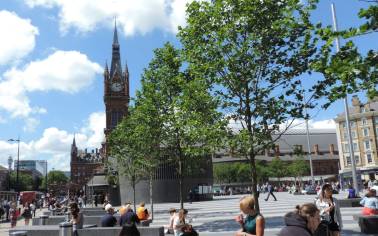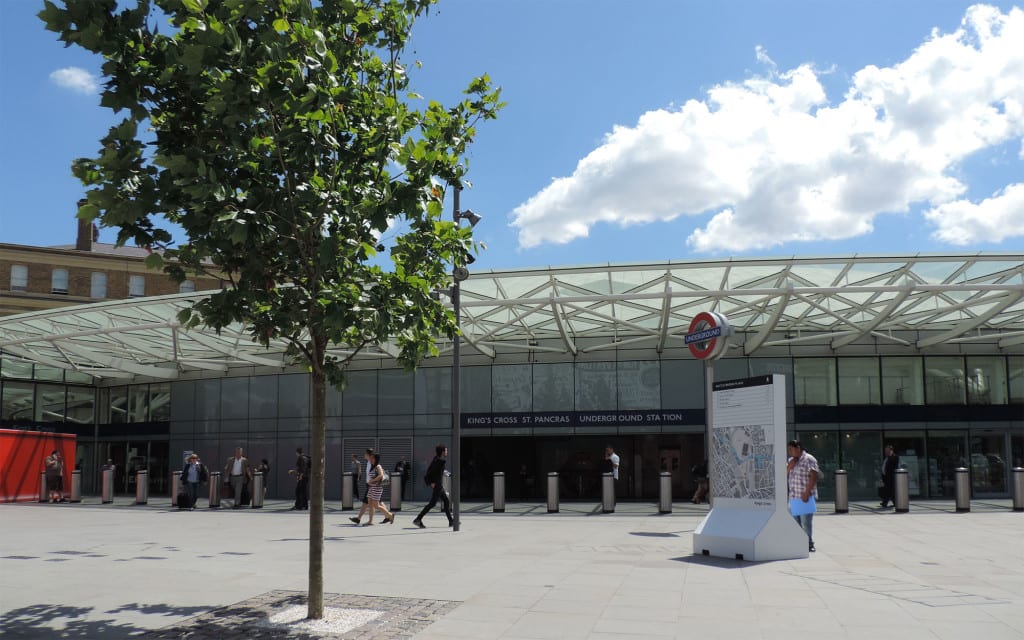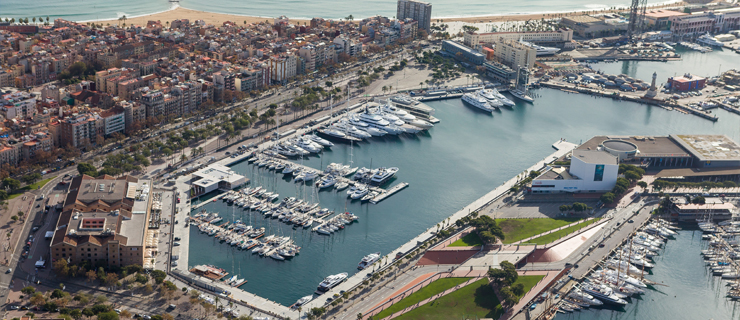Rome wasn’t built in a day. And considering that it’s over 2,500 years old, it’s fair to say that it has sustained a fair bit in its day. Over the past year, Rome has improved its ranking in the world’s top ten sustainable cities from 8th place to 7th, based on sustainable environment factors.
Not bad for a city more than two thousand years old and more famous for its ancient buildings than its environmental sustainability. Also noteworthy is London’s accession into the top ten during the same period. Sometimes these achievements are the result of dragging the respective cities, kicking and screaming from conditions of gross neglect, into the 21st century.

But what makes a city sustainable? How does the vision and foresight of the dreamers become the immense and sustainable benefit-to-all that arises from upgrading distressed districts into prosperous, sustainable communities?
In Central London, the area of King’s Cross Station Square was, for the whole of the twentieth century, one of the grubbiest and most seedy areas in the city. To transform King’s Cross, neglected for many decades and surrounded by almost forgotten relics of steam railways and decayed industrial revolution buildings, at first seemed financially unachievable. But against all the odds, the area has now become a model of modern city living. It’s amazing what £3 billion of investment can do. Now sustainable energy-efficient towers and premium apartments rise among the renovated Victorian buildings of the former Railway Lands.

On completion, the then London Mayor Boris Johnson declared that… “the regeneration of the King’s Cross area is simply incredible, with the twin jewels of King’s Cross and St Pancras stations standing proud as the gateways to an almost 70-acre site of new buildings and streets, public squares, businesses, cultural locations, and heritage sites, as well as many new homes for Londoners. The stations, the restored industrial buildings, the inspiring Victorian structures, and surrounding lands have been handled with great ingenuity, sensitivity, and foresight. King’s Cross station is delightfully inspiring and easily a match for the architectural marvels of St Pancras. For me, the Station Concourse is the ultimate steel-and-glass homage to the string vest.” Twenty years ago, his words would have been deemed crazy.
The crowning touch to this transformation is the removal of all the cluttered accumulation of ad hoc bits and structural pieces in front of the station façade and their replacement by the beautiful and calming atmosphere of the new Kings Cross Square replete with newly created open spaces and many, rapidly maturing, large-canopy, trees.

Apart from the above ground challenges, beneath the surface, an ant’s nest of underground railway tunnels, concourses, and service ducting also had to be accommodated. The suitability of GreenBlue Urban’s ReRoot 2000 (known in North America and Australasia as RootStop) as a root proof membrane between the tunnel roofing and the tree root sustaining soil environment was understood by the project specifiers. Permission had never before been granted for the planting of potentially mature specimen trees above such subterranean infrastructure in the City of London. The welfare of the growing trees was assured by the use of GreenBlue Urban’s modular soil management system. Capable of withstanding enormous vertical and lateral loads, over 94% of the volume of these innovative structural modules is available as void space for uncompacted soil, free from growth inhibiting compaction risks, providing a healthy growing medium for the trees.
In Barcelona, Spain, the OneOcean Port Vell Marina opened in 2015 at a cost of €897 million. Only 12 months later, all 158 berths were booked for the winter, generating about €750 million a year for the local economy. To attract the super-rich and their mega-yachts (above 80 metres long) enormous efforts have been made to transform Barcelona’s very run-down fishing port and one of the city’s poorest districts, into a sustainable, green, spacious and airy magnet for economic growth.These case studies illustrate that whether objections to a sustainable city design are human, financial, or technical they can be overcome to beneficially change the quality of life for all.

These case studies illustrate that whether objections to a sustainable city design are human, financial, or technical they can be overcome to beneficially change the quality of life for all.
However, this often isn’t possible without intensive analysis of, and research into, what constitutes a sustainable city designed on biophilic principles. GreenBlue Urban have proactively collaborated with university researchers to identify the reasons for the high mortality rate in urban tree planting. Major advances over the past twenty-five years have brought together horticultural and engineering solutions replacing hit and miss guesswork with predictable and sustainable city afforestation development.
To integrate, as seamlessly as possible, our urban areas with the natural world, life throttling urban soil conditions must be replaced by root media resembling as closely as possible the natural forest floor. The research by GreenBlue Urban and their partners has approached this by the integrated application of sustainability solutions to the whole range of challenges.
Low Impact Development (LID) and Sustainable Urban Drainage Systems (SUDS) provide opportunities for improved sustainable living environments through the utilization of a mixture of nature based and traditional stormwater management solutions to reduce flood risk and attenuate surface water runoff.
Implementation at the very earliest stages of the design process – bringing together Civil Engineers, Landscape Architects, Architects, and Arborists – to decide on the configuration and appropriate LID / SUDS interventions ensures robust sustainable solutions. Unseen subsurface structures such as RootSpace augment root management to ensure non-compacted, well irrigated and drained soil conditions, vital to achieving the maximum benefits of biophilic design principles to encourage the creation of sustainable streetscapes, and ultimately sustainable cities.

